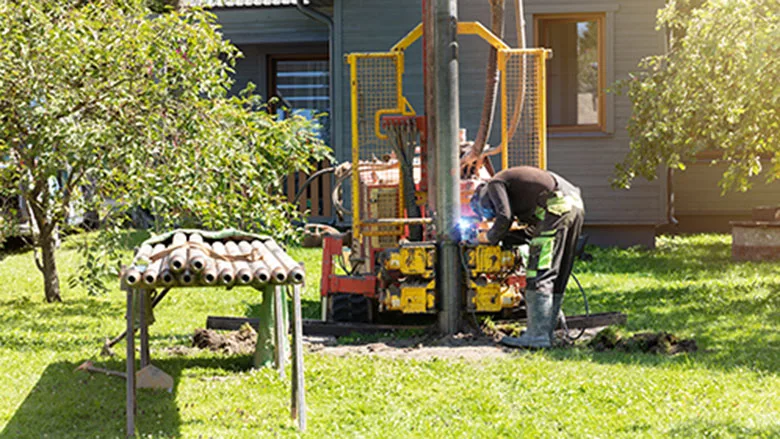Managing a Multi-Generation Workforce in Drilling, Construction
Is it a Help or Hindrance? Leadership Decides

Does it change how you think about the driller if the photo if you know he’s 30 years old? What about 70?
Source: Getty Images
It’s no surprise to most drilling companies that today’s workforce is the most diverse ever. Throughout history, we’ve never seen five generations in the workplace at the same time! This has created unique opportunities and challenges for organizations when it comes to managing and leading employees, particularly in the drilling industry.
To have the most positive impact on company performance and retention, it is vital for leaders to find a balanced leadership style that speaks to all five generations of workers. Today, I’ll break down what makes the five generations so different and how leaders can create a workplace that supports retention and performance for all employees.
Generational Overview
Five main generations make up today’s workforce:
- Traditionalists, the “silent generation,” born between 1925 and 1945
- Baby boomers, born between 1946 and 1964
- Generation X, born between 1965 and 1980
- Millennials (or Generation Y), born between 1981 and 2000
- Generation Z, born between 2001 and 2020
What makes each group distinct isn’t so much the year they were born, but the views the have on the world and how their concept of “work” is valued and defined. For example, traditionalists and baby boomers have seen wars, the civil rights movement and other significant historical events that shaped their perspectives and beliefs. Because of this, these employees tend to place a higher value on things like seniority and stability when it comes to their work.
What makes each group distinct isn’t so much the year they were born, but the views the have on the world and how their concept of “work” is valued and defined.
In contrast, Generation X, Y and Z employees witnessed the rise of the internet, terrorism (both at home and abroad) and increased reliance on technology in their daily lives. These employees are motivated more by recognition, accomplishment and the ability to be creative and experience more flexibility when it comes to their work.
Opportunities
While many highlight the downsides associated with a multi-generational workforce, companies have many opportunities to leverage it as a strength. Building a multi-generational workforce where employees work together cohesively creates a dynamic and diverse environment where they feel empowered and engaged. Leaders who understand generational differences in values, communication styles and motivations help create a team environment where every employee feels included and aligned to the company’s mission.
Another significant opportunity within a multi-generational workforce relates to training and development. Traditionalists and boomers have a wealth of knowledge that employers can, and should, tap into and pass along to younger generations. In fact, studies support the fact that these elder generations thrive in environments where they can provide mentoring and coaching. At the same time, Generation X, Y and Z employees can also engage in knowledge sharing, as they gain exposure and expertise with technologies that can help organizations be more productive and efficient.
Challenges
When it comes to the challenges associated with employing a multi-generational workforce, communication tops of the list. Understanding each generation’s unique motivators will help leaders identify the most effective ways to communicate with them. Another challenge relates to the way in which work is designed. While traditionalists and boomers may want more structure and thrive in a hierarchy environment, Generation X, Y and Z employees desire more flexibility and autonomy. In most cases, the work of a driller doesn’t allow for much modification. You can, however, find ways to make the job more appealing to workers of different generations.
A significant challenge — and one often overlooked in the drilling industry — is the way a multi-generational workforce interacts and works together as a team. As leaders, we can shift the work environment and ways in which we communicate, but we shouldn’t forget the impact co-workers can have on one another. Every employee needs a baseline knowledge of generational differences and how those differences can impact the work environment. Without it, even the best leaders won’t be able to prevent turnover and negative impacts on performance.
Best Practices
There is no one-size-fits-all solution to leading a multi-generational workforce. However, leaders can create work environments where everyone can thrive. Training is key! The hard truth? Many traditionalist and boomer employees — many of them senior drillers — continue to treat younger employees as they were treated when they first joined the industry decades ago. And Generation X, Y and Z employees sometimes lack an appreciation for the tribal knowledge of older-generation workers, and often get perceived as disrespectful or disengaged.
Changing these perspectives, for all generations of employees, can only happen with education and awareness of generational differences — and the huge impact they can have on the work environment. Giving all employees the knowledge base and understanding of motivators and communication style differences among generations will help facilitate stronger, more connected teams.
Looking for a reprint of this article?
From high-res PDFs to custom plaques, order your copy today!








